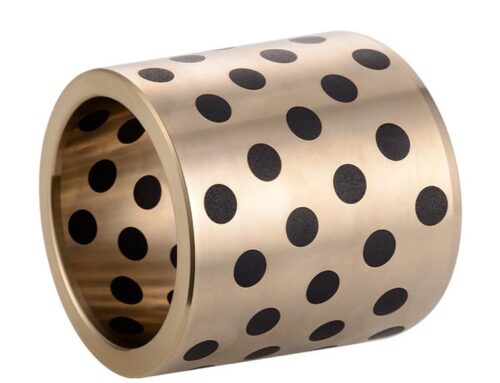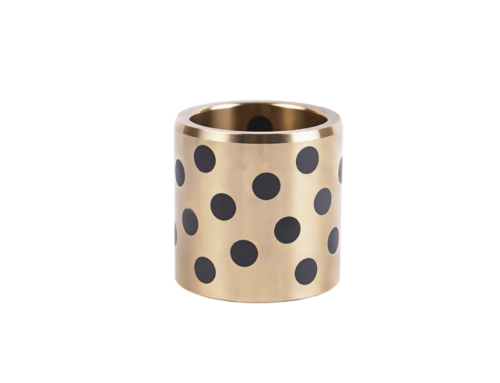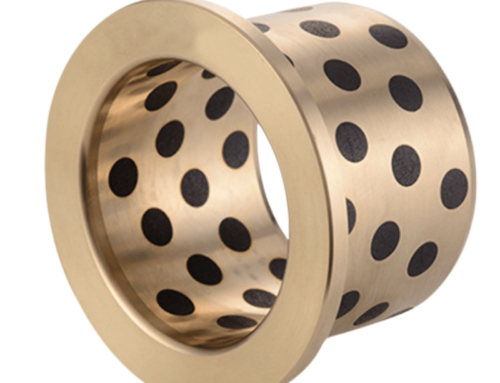Pump Bushing Bearings: Materials, Types, and Selection Guide for Peak Hydraulic Efficiency
In hydraulic systems, pump bushing bearings play a pivotal role in ensuring smooth operation, reducing friction, and extending equipment lifespan. These components support rotating shafts in pumps and motors, minimizing wear while enhancing performance. This guide explores the different types, materials, and applications of pump bushings, helping you select the optimal bearing for your hydraulic system.
What Are Pump Bushing Bearings?
Pump bushings (or plain bearings) are cylindrical or flanged sleeves that support shafts in hydraulic pumps and motors. Unlike ball or roller bearings, they operate via sliding contact, relying on lubrication (or self-lubricating materials) to reduce friction. Key benefits include:
✔ Reduced friction for improved hydraulic efficiency
✔ Extended service life with minimal maintenance
✔ High load capacity in compact designs
✔ Noise and vibration reduction for smoother operation
Types of Pump Bushing Bearings
Different pump designs require specific bushing configurations. Common types include:
| Type | Description | Applications |
|---|---|---|
| Cylindrical Bushings | Simple sleeve design for radial shaft support | Gear pumps, piston pumps, rotor pumps |
| Flanged Bushings | Feature an extended lip for axial alignment and stability | Vane pumps, high-precision systems |
| Thrust Washers | Flat bearings that handle axial (thrust) loads | Hydrodynamic systems, gear pumps |
| Self-Lubricating Bushings | Made with PTFE or composites to eliminate external lubrication needs | Low-maintenance hydraulic systems |
| Bimetal Bushings | Steel-backed with a bronze or PTFE layer for durability and low friction | High-pressure gear pumps, motors |
Key Materials for Pump Bushings
Material selection impacts wear resistance, friction, and load capacity. Here’s a comparison:
| Material | Key Properties | Best For | Pros | Cons |
|---|---|---|---|---|
| PTFE Composites | Self-lubricating, low friction, corrosion-resistant | Piston pumps, vane pumps | No external lubrication needed | Lower load capacity vs. metals |
| Bronze | High load capacity, good wear resistance | Gear pumps, rotor pumps | Durable, cost-effective | Requires lubrication, can corrode |
| Bimetal (Steel + Bronze/PTFE) | Combines strength with low friction | High-pressure pumps, motors | High durability, handles heavy loads | More expensive than single-metal options |
| Polymer Composites | Lightweight, corrosion-resistant | Low-to-medium load applications | Affordable, easy to manufacture | Less durable under extreme conditions |
| Stainless Steel | High corrosion resistance | Harsh environments, marine pumps | Excellent for corrosive settings | Higher friction, needs lubrication |
Critical Applications of Pump Bushings
- Piston Pumps/Motors → PTFE or bimetal bushings for low friction & high pressure
- Gear Pumps → Bronze or bimetal bushings for heavy loads
- Vane Pumps → Flanged or self-lubricating bushings for smooth operation
- Rotor/Crescent Pumps → Polymer or bronze bushings for cost efficiency
- Harsh Environments → Stainless steel or PTFE bushings for corrosion resistance
Why Self-Lubricating Bushings Are Gaining Popularity
✔ Zero maintenance – No need for grease or oil
✔ Longer lifespan – Reduced wear even at high speeds
✔ Energy-efficient – Lower friction = better hydraulic performance
✔ Compact & lightweight – Enables smaller pump designs
Case Study: PTFE Bushings in Gear Pumps
A hydraulic pump manufacturer replaced bronze bushings with PTFE-based self-lubricating bushings, achieving:
✅ 30% lower maintenance costs
✅ 15% efficiency improvement
✅ 20% longer service life
How to Choose the Right Pump Bushing
Consider these factors:
- Load & Pressure – High-pressure? Use bimetal or bronze. Moderate loads? PTFE or polymers.
- Maintenance Needs – No maintenance? Self-lubricating bushings are ideal.
- Environment – Corrosive? Stainless steel or PTFE. Clean/dry? Bronze or bimetal.
- Budget – Cost-sensitive? Polymer composites. Long-term savings? PTFE or bimetal.
Self-Lubricating vs. Lubricated Bushings: Quick Comparison
| Factor | Self-Lubricating Bushings | Lubricated Bushings |
|---|---|---|
| Maintenance | None required | Regular lubrication |
| Lifespan | Longer | Shorter (if neglected) |
| Cost | Higher initial cost | Lower upfront cost |
| Efficiency | High (low friction) | Moderate |
| Corrosion Resistance | Excellent | Moderate to poor |
Where to Source High-Quality Pump Bushings
Look for suppliers offering:
✔ Custom sizing & materials
✔ Fast lead times & low MOQs
✔ Technical support & testing samples
Final Thoughts
Choosing the right pump bushing bearings can drastically improve hydraulic system performance. Whether you need self-lubricating PTFE bushings for maintenance-free operation or high-strength bimetal bushings for heavy loads, selecting the optimal material and design ensures efficiency and longevity.
Need expert advice? Contact a trusted bushing supplier today for samples or a consultation!





